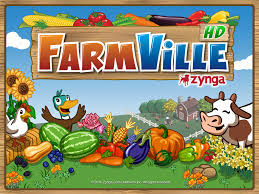If there's one company who turned the social networking
phenomenon of the 21st century into a milking cow, it has to be Zynga. The San
Francisco-based social gaming company has leveraged the social reach of
Facebook along with the market reach of Android and the iPhone to become a $1.1
billion company from developing online games. Its most popular games such as FarmVille
and CitiVille, along with ChefVille and the recent Zynga Poker are played by an
estimated 265 million online social gamers as of January 2013. Roughly 80% of
its revenues comes from Facebook.
Real world problems + Marketing Lessons
But not all is well with Zynga. After it started trading on
NASDAQ in December 2011 with an IPO of $10 per share, Zynga's share prices has
plummeted to reach $2 per share in 2012. It appears that investors have become
cautious about the company's shaky business model as its revenues failed to
meet analyst forecasts as early as the 2nd quarter of 2012.
So what went wrong and what marketing lessons From Zynga can
we get from this? Firstly, it now appears that social gaming has a fluid and
short retention factor where casual gamers soon lose interest in the games.
Players on its Farmville have been diminishing by the millions every month.
Studies have shown that social games retain only 38% of their users after a
month and 14% before the 6th month. This makes it important for a social gaming
company like Zynga to introduce new games without let-up. Indeed, Zynga's
strategy has been to put more game titles to catch those leaving older games.
The company has become a Pacman gobbling up small social game developers.
Unfortunately, investors are not impressed. While newer and presumably more
exciting social game titles can promise more markets, Zynga is actually just
moving their social from one title to another and it has yet to impress
investors that its market value is well worth investing into.
But perhaps the most serious problem is that Zynga does not
own its main distribution channel - Facebook. Not owning the platform that its
customers use to play its games has put Zynga at a long-term disadvantage. It's
at the mercy of the social network leader. The tumultuous relationship between
Zynga and Facebook is well known. No one knows what will happen to Zynga once
its contract with Facebook expires a month from now. It may be a bit late in
the game that Zynga has made a gaming presence with other social network sites
like Google+. Spreading its online gaming muscle across more social network
sites is something it should have done earlier. As it is, Zynga has put almost
all its proverbial eggs in one basket. That's like getting only one store to
sell your products.
Opening the road from online gaming to gambling
One area where Zynga has made significant repercussion is in
the online gambling world. Zynga's 's Poker may just be a game where you buy
loads of fake money with real money online. But this has caught the attention
of serious online gambling kingpins who have been struggling for years to get
more people to gamble online. 30 million online poker gamers each month is not
something they can overlook. What was Zynga doing that they were not doing?
It's social media. Online gamblers have failed to capitalize on a ready market.
If and when the US Congress finally gets its act together for a comprehensive
online iGambling law, it only takes Zynga to replace its Poker game's fake
money with real one to become the king of the hill in online gambling.
The ultimate lesson: Social Media Marketing = Market Success
From its inception in 2007, Zynga achieved its status as the
#1 online gaming company in so short a time thanks to Facebook and the power
that social networking has in creating the proverbial market reach and brand
awareness advertisers have been eternally pinning for. On hindsight, Facebook
users can remember how annoying those FarmVille solicitation incessantly
appearing in news feeds and posts. But the annoying truth is, it worked
extremely well for Zynga. It didn't take long to say "let me see what this
Farmville is about" and you clicked the ads. After that, you were hooked
to the game.
Hitching an unknown product to a rising star confirms what
just about everyone know but rarely practices. It is more widely used in
politics. At a time when Facebook was just in its infancy from a 2004 launch,
Zynga latched its future on what it saw was a promising sunrise business in
cyberspace. The period saw the golden age of social networking when advertising
was free and going viral for any advertising message on a massive scale was
fast and easy.
Zynga took advantage of this and entered into a preferential
symbiotic relationship with Facebook that gave them first hand information on
how best to make their online games fit into the evolving Facebook technology.
It a;lso allowed them to exploit the emerging social media distribution
circuit. This effectively created a barrier to future entrants in online social
games. The rest, as they say, is history.
A lot has been said extolling the value of social networking
that went from a mere campus trend into the global phenomenon that has defined
21st century online landscape. More significantly, social networking has
spawned a new way to market new products and services in what is now called
Social Media Marketing. Zynga's market success is about social media marketing.
Consider what they did with it
Engage in ruthless customer acquisition

Apart from an extensive and purposive campaign right within
Facebook pages as well as emails, Zynga maximized every advertising opportunity
to create online gaming awareness and develop interest among Facebook users.
Never mind that it was easy and free and Zynga took advantage of it. The social
network allowed Zynga to harness your own friends and relatives on the network
to interest you in their games. Once hooked, you become an advertising
mouthpiece on the social network. Imagine this multiplied across Facebook that
now has almost a billion users on the planet.
Retain your customer
To a large extent, Zynga was able to stem the slide in
player interest for any one game with incentives. They offered free this or
that gaming element that extended the gaming delight beyond boredom. CitiVille,
for instance, offered the player free batteries and new buildings to get you to
the next gaming level via email prompts. And if you missed to play for a long
time, you get email notifications with even more freebies.
But what stood out was Zynga's customer relationship
management by opening up communication between Zynga's game developers and its
game players. This ensured that the games got constantly better with
enhancements the players themselves want. Nothing could be more customer-driven
that this. In fact, after a short time from their launches, what started as
bare games are now among the best online games with their rich features sourced
from their own players.
Conclusion
The company does have its problems and challenges, but what
company does not? The more successful one is, the more problems confront it.
But social media marketing can make like a bit easier for many companies
struggling to get a share of the market. From a small online gaming company in
2007, to the biggest by 2010, Zynga has shown the way in social media
marketing.


